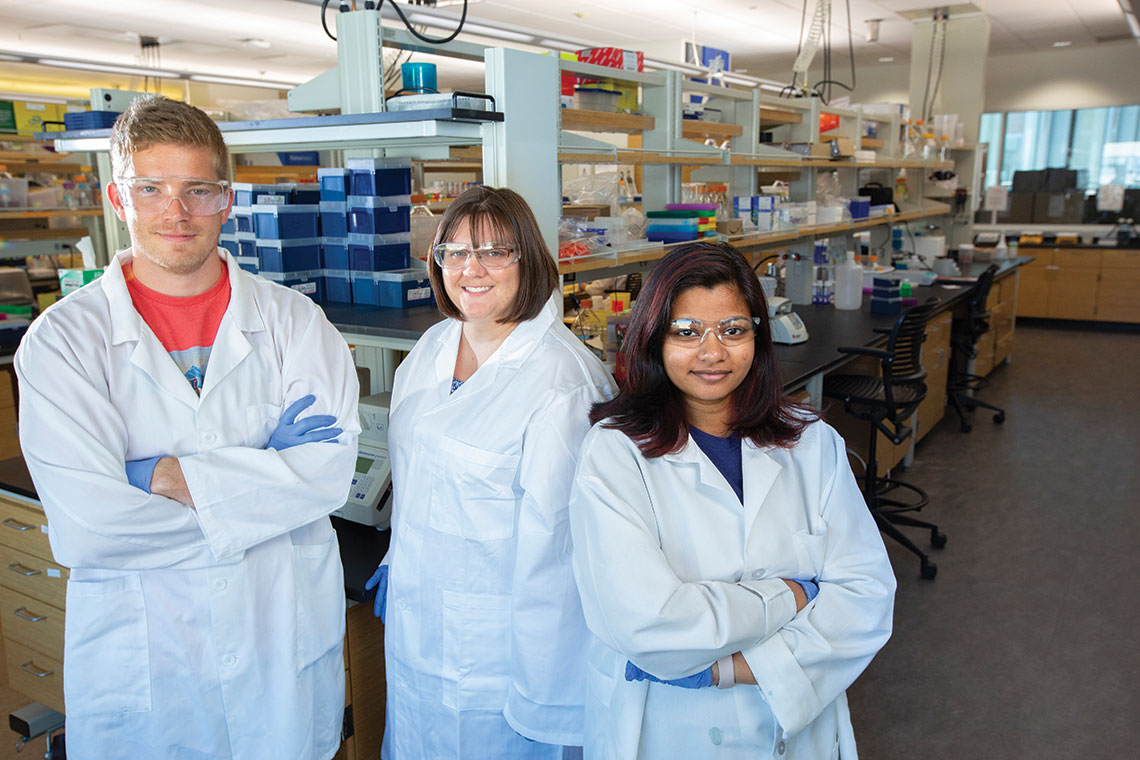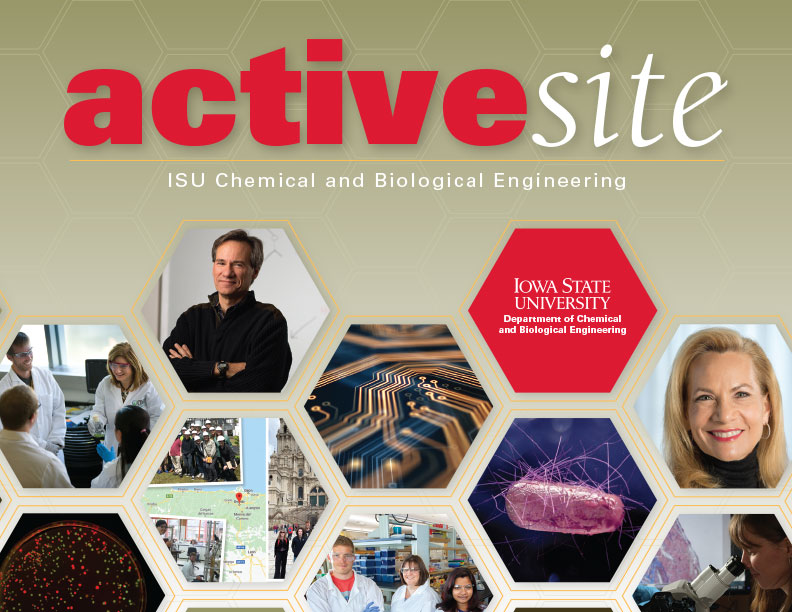
The headlines and feature stories have become frequent for the Iowa State University-based Nanovaccine Institute, a multidisciplinary network of scientists devoted to transforming the development and delivery of vaccines and therapeutics that will fight deadly diseases worldwide.
Led by Iowa State Chemical and Biological Engineering Anson Marston Distinguished Professor and Vlasta Klima Balloun Faculty Chair Balaji Narasimhan, it’s composed of researchers from 20 institutions nationwide.
Nanovaccines are composed of tiny particles that encapsulate a multitude of payloads and/or medicines which can be delivered to targeted areas of the body to address specific problems. They will be used to treat everything from flu to cancer in a revolutionary way to tackle daunting diseases.
But there is another component to the story: a group of chemical engineering graduate students and research associates who are working alongside faculty while they earn their Ph.D.s – and prepare to enter the world of scientific education and research armed with invaluable first-hand experience.
Sean Kelly is a graduate student scheduled to receive his Ph.D. in December, 2019. Kathleen Ross obtained her Ph.D. from CBE in 2013 and now works for the institute as an assistant scientist. Sujata Senapati is a graduate student who plans to obtain her Ph.D.
What led you to Iowa State for your graduate work?
Sean: “When I was an undergrad at Colorado State University, I studied under Matt Kipper, a faculty member at CSU, who was Dr. Narasimhan’s first Ph.D. student at Iowa State. Through Dr. Kipper I learned about Iowa State and Dr. Narasimhan. I applied and started in the fall of 2014.”
Kathleen: “I was at Michigan Tech as an undergrad in biomedical engineering and came to Iowa State for a summer with ISU’s BioMaP REU undergrad research program. When it came time to choose a graduate program, I contacted Dr. Narasimhan, and ended up coming back. I got my Ph.D. here in 2013.”
Sujata: “I was fascinated by nanomaterials and their biological applications, and ISU intrigued me!”
What type of research are you doing with the Nanovaccine Institute?
Sean: “My focus is on respiratory pathogens and how nanovaccines can address them. I’m helping to create vaccines that deal with this by being ‘shelf-stable.’ Vaccines that remain viable in storage for the long term and can be used in the future if needed for large disease outbreaks.”
Sujata: “I am working on a nanomaterials-based vaccine against influenza, specifically designed for older adults. People above 65 are more susceptible to flu because conventional technology doesn’t address changes in their immune system. We do.”
An addition to your experience in the lab has been a spray dryer-based process you’ve designed to help create the nanovaccine materials you use. Tell us about that.
Sean: “The process uses a piece of lab equipment called a spray dryer and Kathleen, Dr. Narasimhan and I developed it to help produce the nanoparticles used in creating the vaccines more efficiently. It basically mass-produces them, which makes turning them out in larger quantities viable. You can’t produce thousands of nanoparticles by doing them in small batches, as is normally done. The spray dryer combines a solution with a vaccine of interest and basically sprays fine droplets out at the top of a large tube. As the droplets fall through the tube a solvent on the outside of each particle dissolves away and dries and you are left with many nanoparticles that encapsulate the vaccine.”
Kathleen: “The spray dryer benefits our work in different ways. It is more cost-effective since it allows you to create nanoparticles en masse. It’s also environmentally friendly because the process uses a lot less chemicals.
What do you like best about your work with the Institute?
Sean: “It is very humbling to work with a group like this where you are constantly reminded of how working together can accomplish many goals.”
Kathleen: “We get to work with people from so many different disciplines, and we also work with different animal models with the research. We work with biologists, virologists, immunologists and other engineers.”
Sujata: “We understand that pathogens are smart, and to tackle them, we need expertise from people in different fields.”
What are your future plans?
Sean: “I’m just finishing up my Ph.D. program, but I hope to to stay on for another year to continue development of the spray dryer-based process. I really like working with biomaterials in vaccines, and I look forward to working with that.”
Kathleen: “I want to continue working as an assistant scientist with the group. I’ve looked at industry and education, but neither seemed like a 100 percent fit for me. Work we are doing with the flu nanovaccine on mice will be entering its next phase, which will be testing it on monkeys. That would be the final step to applying for FDA clinical trials.”
Sujata: “I want to do postdoctoral training after my Ph.D. to find improved global healthcare.”
The Nanovaccine Institute will soon move into a new dedicated space in ISU’s Advanced Teaching and Research Building. This will put all nanovaccine researchers together under one roof, creating an even more united and efficient collaboration.
